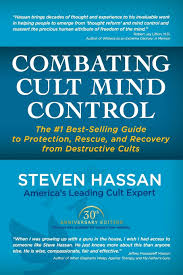Cult Recovery
Paper on cult-like tendencies in the NKT

Here is an important paper by psychologist Michelle Haslam reflecting on her time spent practising with the New Kadampa Tradition (and a few references to Triratna thrown in). Reading through the paper may be a useful detox for those who have recently (or not so recently) exited Triratna since many of the negative patterns of thought and behaviour are shared by both movements. In particular we noted these similarities, sometimes paraphrased and sometimes listed here in direct quotes from the text:
1. "Under the highly polished surface lies ingrained sectarianism and a disparaging view of all other forms of spirituality; an expansionist drive that uses the energy of new recruits to spread the message with no concern for their burnout."
2. "a cultish dependency on the word and approval of the leader and an abdication of critical thought that is actively encouraged."
3. Both organisations are populated by "hero-narcissists" who play into a sense of group grandiosity. We can see this in Triratna's slogan "What the World Needs" (i.e. more Triratna).
4. Neither organisation offers the Buddha Dharma but highly idiosyncratic takes on Buddhism developed by their founders, i.e. the "Kadam Dharma" and the "Triratna Dharma Life" (aka the "particular presentation").
5. Haslam says, "Despite being a psychologist, and an atheist, and working full time outside of the centre, I am now shocked at the extent that I came to believe some of the teachings and to act accordingly." Aren't we all!?
6. "on top of the abusive experience experienced within the group, the wider community is likely to abandon you or emotionally neglect/invalidate you at a time of distress." As happened to Mark Dunlop and other whistleblowers in Triratna.
7. "Many survivors have reported that their friends who were not NKT members had more empathy and were more friendly than their NKT friends." One instance of this in Triratna springs to mind when an Order member friend of ours needed overnight accommodation when visiting a dying friend (also an Order member). One local community (that he had previously lived in for many years) refused to put him up on account of certain "views" he was supposed to hold.
8. "The teacher is . . . regarded as an embodiment of the moral and spiritual dimensions of Buddhist teachings. It is this ideal that underlies the role of teacher as exemplar and shapes the asymmetrical charismatic relationship between a teacher and his students. Such idealisation often leads a student to experience strong emotional attachment, with feelings that parallel those associated in Western culture with romantic love. This can lead to self-abandonment and glorification of the other."
9. "The member may feel as if the practises are ‘working’ for them due to indoctrination, fervor (infatuation and awe), emotional contagion, group narcissism, sense of belonging to a group, and love-bombing through the suggestion that they are all developing positive karma or ‘merit’."
10. "Believers are often extremely protective of their movement and deeply angered when it is questioned or insulted. Increased anxiety in attachment relationships is thought to increase hostility towards out-groups."
Steven Hassan's BITE model of cult mind control

When reflecting upon our interactions with various College members over the past decade, we found the arguments used to rationalise Sangharakshita's sexual behaviour and explain away or minimise his peculiar opinions about women or the dangers of heterosexual coupledom (used to provide an enabling environment for that behaviour) difficult to fathom. In coming to understand them, we have found cult expert Steven Hassan's exhaustive list of mind-control strategies useful. When someone in the order tells you something that you recognise doesn't make sense, such as the need to 'hold the contradiction' between Sangharakshita's 'sexual experimentation' and his depth of insight, rather than just going along with it, take a minute to see if you can recognise any of the mind control strategies used to justify that position on Hassan's mind-control list.
Letter from a friend

"…you can help a friend or relative in a high-demand group simply by engaging with them as if they are a full and rich person with their own ideas and autonomy. The work of Alexandra Stein suggests that modelling secure attachment is key to healing. Steve Hassan’s work suggests that appealing to a person’s “pre-cult” self can be very effective. A friend did that for me once with a letter. He helped free a part of me that had been locked up."
Matthew Remski in http://matthewremski.com/wordpress/whats-behind-the-blowback-youll-get-w...
Alexandra Stein Interview on Cults and the Trauma Bond
A fascinating in-depth conversation between Alexandra Stein and Chris Shelton on the subject of Steins academic paper, 'Love, Terror and Brainwashing'. Drawing on their personal experiences in different political or religious cults, they discuss the particular dynamics of what attracts, hoodwinks and binds people to high demand groups (or 'cults') and what can help people recover.
What's behind the blowback you'll get when you engage cult members
Article by Matthew Remski explaining how and why all cult members are abuse victims to varying degrees
Attachment theory and post-cult recovery. Alexandra Stein
Attachment theory provides a key to understanding the emotional damage from growing up in a cult, explain Alexandra Stein and Mary Russell
There are various definitions of cults. We use one grounded in the work of psychiatrist Robert Jay Lifton3 and Hannah Arendt:4 ‘A cultic system is formed and controlled by a charismatic authoritarian leader or leadership body. It is a rigidly bounded, steeply hierarchical, isolating social system, supported and represented by a total, exclusive ideology. The leader sets in motion processes of coercive persuasion (also known as “brainwashing”), designed to isolate and control followers.
